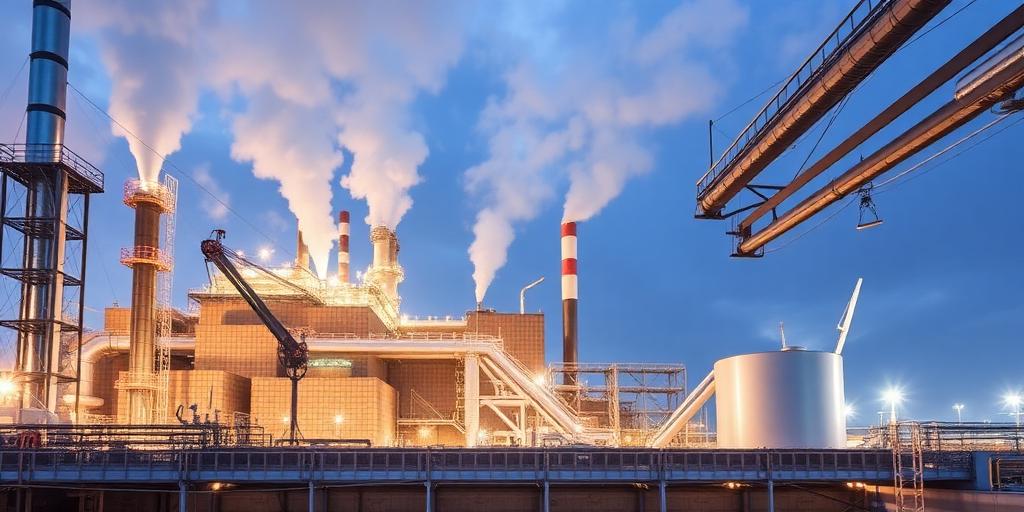Carbon Capture Technologies: Viability and Scale by 2025
Carbon capture technologies are gaining prominence as a crucial strategy in mitigating climate change. The ability to capture carbon dioxide (CO2) emissions from industrial sources and the atmosphere offers a pathway to reducing greenhouse gas concentrations and limiting global warming. This article examines the viability and potential scale of carbon capture technologies by 2025.
Understanding Carbon Capture Technologies
Carbon capture technologies encompass a range of methods designed to capture CO2 from various sources. These sources include power plants, industrial facilities, and even directly from the air. The captured CO2 can then be stored underground (carbon sequestration) or utilized in various industrial processes (carbon utilization).
Types of Carbon Capture Technologies:
- Post-Combustion Capture: Captures CO2 from the flue gas of combustion processes.
- Pre-Combustion Capture: Converts fuel into a mixture of hydrogen and CO2 before combustion, making CO2 capture easier.
- Oxy-Fuel Combustion: Burns fuel in pure oxygen, producing a concentrated stream of CO2.
- Direct Air Capture (DAC): Removes CO2 directly from the atmosphere.
Current Status and Developments
As of 2024, several carbon capture projects are operational worldwide, with many more in development. These projects vary in scale and technology, reflecting the diverse approaches being explored. Key developments include:
- Increased Investment: Growing investments in carbon capture projects by both governments and private companies.
- Technological Advancements: Ongoing research and development efforts focused on improving the efficiency and reducing the costs of carbon capture technologies.
- Policy Support: Implementation of supportive policies and incentives, such as tax credits and carbon pricing mechanisms, to encourage the deployment of carbon capture.
Viability by 2025
By 2025, carbon capture technologies are expected to become increasingly viable, driven by technological advancements, policy support, and economic incentives. However, several factors will influence their widespread adoption:
- Cost Reduction: The cost of carbon capture remains a significant barrier. Efforts to reduce costs through technological innovation and economies of scale are crucial.
- Infrastructure Development: The development of transportation and storage infrastructure is essential for the captured CO2. Pipelines and geological storage sites need to be established.
- Public Acceptance: Public perception and acceptance of carbon capture technologies, particularly carbon sequestration, can impact project development.
Potential Scale by 2025
The potential scale of carbon capture by 2025 will depend on the rate of deployment of these technologies. While it is unlikely that carbon capture will single-handedly solve climate change by then, it can play a significant role in reducing emissions. Key factors influencing the scale include:
- Project Capacity: The capacity of individual carbon capture projects varies widely. Scaling up existing projects and deploying new, larger-scale projects is necessary.
- Geographic Distribution: The distribution of carbon capture projects across different regions will impact their overall effectiveness. Projects need to be located near major emission sources.
- Integration with Industries: Integrating carbon capture technologies with various industries, such as power generation, cement production, and steel manufacturing, is crucial for achieving significant emission reductions.
Challenges and Opportunities
Despite the potential benefits, carbon capture technologies face several challenges:
- High Energy Demand: Some carbon capture processes require significant amounts of energy, which can offset some of the emission reductions.
- Storage Capacity: The availability of suitable geological storage sites for captured CO2 is limited in some regions.
However, there are also significant opportunities:
- Carbon Utilization: Utilizing captured CO2 in the production of valuable products, such as fuels, chemicals, and building materials, can create economic incentives for carbon capture.
- Job Creation: The development and deployment of carbon capture technologies can create new jobs in engineering, construction, and operation.
Conclusion
Carbon capture technologies hold promise as a tool for mitigating climate change. By 2025, these technologies are expected to become increasingly viable and play a more significant role in reducing emissions. However, overcoming the challenges related to cost, infrastructure, and public acceptance is essential for realizing their full potential. Continued investment, technological innovation, and supportive policies will be critical for scaling up carbon capture and achieving meaningful emission reductions.
